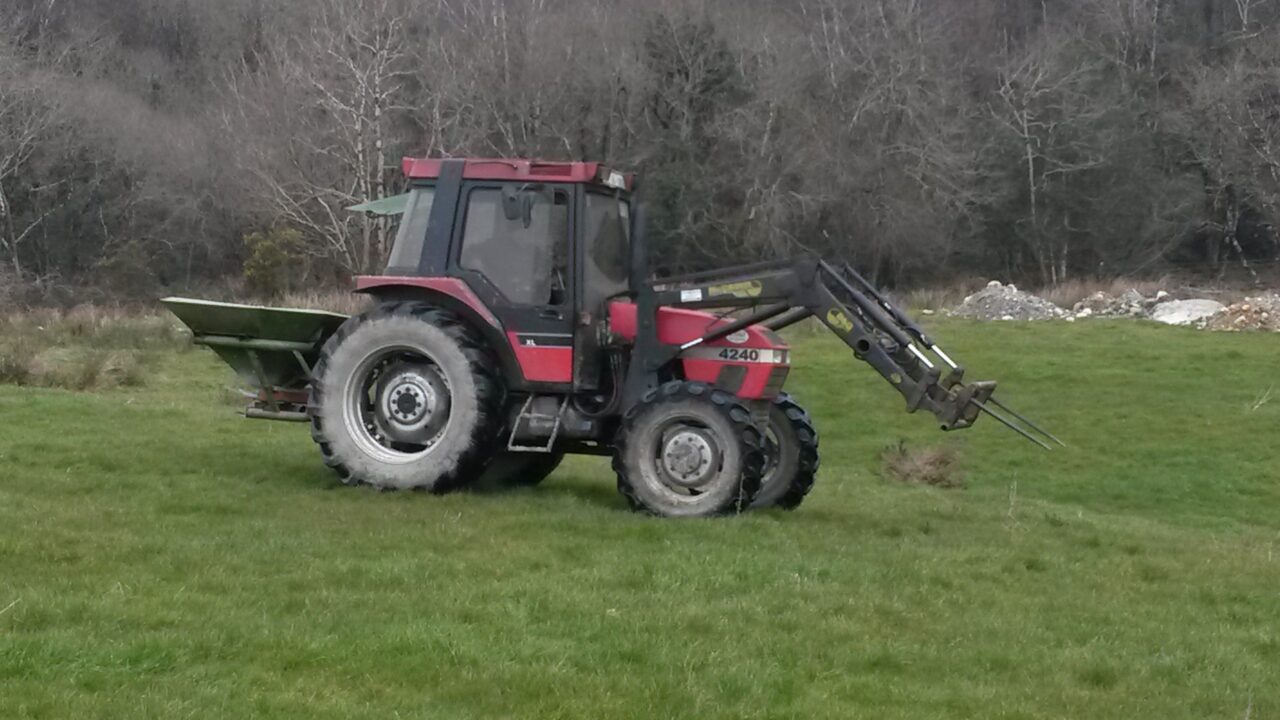There has been plenty of discussion around fertiliser application in January and it is not a once size fits all decision.
Soil temperature, soil conditions and rainfall dictate whether or not Nitrogen (N) application is right for your farm now.
Soil temperature should be 5.5 degrees at least, with no immediate frost forecast, before you consider applying fertiliser.
Which fertiliser to apply depends on your soil fertility and pH.
If you have a very low pH (most paddocks under 6.0) then urea, in my opinion, would be a waste of time. Urea works best in high pH soils with Phosphorus (P) and Potassium (K) indices of 3.
It is the cheapest source of N but it may not be the cheapest per kgDM grown.
Meanwhile, the slurry ban ending on February 1, will be a welcome relief to some farmers in Northern Ireland.
Ground conditions are relatively good for spreading so providing the rain holds off, it will be good to get a proportion of the milking platform spread.
Have an idea of where you will graze for the first few weeks post-turnout, this area will not get slurry until after grazing.
The first few paddocks to graze should have a cover of between 500-800kgs/ha, perfect for training the cows into grazing down to zero, then gradually increase pre-grazing covers.
If it can be avoided, do not spread more than 2500gallons of slurry per acre. Using a dribble bar is much more efficient than spread-plate, owing to less N losses.
Before applying any slurry, ensure you have taken soil samples. If you soil sampled last year, are there certain parts of some paddocks that are still underperforming?
If so, it will be very beneficial to soil sample these specific areas, (keeping good records of what part of the field was sampled) to identify any pH, P or K deficiencies.
Most of us are not growing enough tonnes of feed/ha, largely due to poor soil fertility and/or poor soil structure. Micro-managing soil fertility in underperforming paddocks will have huge benefits to your annual grass growth.
When soil sampling, see how easy/difficult it is to get the corer into the ground and have a look at the soil before you box it up and send it off. If the soil does not crumble easily, the area sampled may be compacted. Use a spade to check what the soil structure is like in any paddocks you think are compacted.
Dry cow minerals
Dry cow mineral intake is essential six weeks pre-calving for both heifers and cows. In sheds where feed space is tight, dust minerals onto silage two to three times daily.
To maximise the percentage of cows calving during the day, dry cows and springers should be fed after 4pm for three weeks prior to calving.
This works extremely well if you keep to the routine. We feedout silage before dinnertime but keep cows off feeding passage until just before evening milking.
Cows will finish their silage around 10-11am –- if they are finished by 6-7am they are probably being underfed.
Silage quality can change as you go back in pit so re-sample the pit face.
A low NDF% (fibre content) indicates a high leaf content in the silage so minerals will have to carefully balanced to avoid a high percentage of RFM’s and milk fever issues and straw will have to be included in diet.
Yearlings
Yearlings should be 45-50% of their mature liveweight by now, which is around 250-275kgs (for a 550kg mature weight).
If you have no way of weighing, try to at least split out smaller heifers and either put them out to good quality grass or give them good quality silage and 2kgs 18% meal.
Calving pen
When it comes to the calving pen, woodchip is an good base. Thick bulky woodchip provides excellent drainage for the straw bed, keeping it dry for longer.
Bed the back three quarters of the calving pen and feed at the front, this area can be scraped out easily, which keeps the lying area clean.
Have a book in the calving pen so calving info can be written down.
If you have other people helping with night checks, have them record any RFM’s (retained foetal membranes) and what time cows calved – that way you will know how much colostrum you can feed it (3-4L if born within six hours, however try to get this into them within two hours to maximise antibody and immunoglobulin absorption).
Cows that have RFM’s, even for a short time, will need scanned by vet six weeks pre-breeding to check if cow is dirty or has resumed cycling so it is very useful to record this info now.

